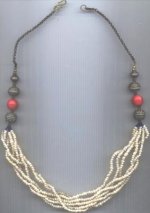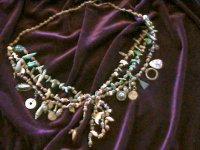YHammouda-Eyre
New Member
- Joined
- Mar 2, 2009
- Messages
- 33
Hello pearl-guide forum members, I recently had the opportunity of viewing an artisan pearl necklace, complete with bali beads, pot silver and featuring a multi-strand of pearls in the front. (please see photo)
I think the pearls are probably freshwater?
The necklace is signed (initial only) by the artist. Im not familiar with native American jewelry and I would like to know if anyone might be able to shed some light on native American jewelry (using pearls) and if this type of pearl jewelry was popular among some of the North American Indian tribes in the history of pearls in North America? And also was there a preference for certain types of the pearls used in North American tribal jewelry?
Thank you Pearl-Guiders
Yvonne
www.antique-jewelry-investor.com
I think the pearls are probably freshwater?
The necklace is signed (initial only) by the artist. Im not familiar with native American jewelry and I would like to know if anyone might be able to shed some light on native American jewelry (using pearls) and if this type of pearl jewelry was popular among some of the North American Indian tribes in the history of pearls in North America? And also was there a preference for certain types of the pearls used in North American tribal jewelry?
Thank you Pearl-Guiders
Yvonne
www.antique-jewelry-investor.com


